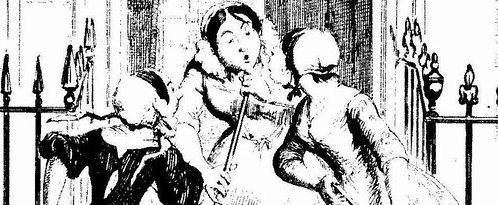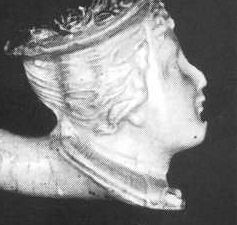The Countess - worth £10
Finally, after too long a break, to the theatre last night. I thought The -Countess would be an excellent encore to the season's other pre-Raphaelite play, Earthly Delights and it did work out quite well. Together they send a message that if you were a woman at the time, the approach of any handsome young pre-Raphaelite should make you run in the other direction just as fast as your crinoline would let you.
The Countess hasn't been particularly well reviewed, see for example the Guardian's and Telegraph's verdicts.
The publicity outside the theatre too doesn't do it any favours, suggesting something suitable for a stereotypical maiden aunt, while in fact the themes, if not the language, would demand a broadminded one.
And it is curious that this production seems to have been a roaring success in New York, because it does suffer from a curious lack of intellectual sophistication. The set is plain tacky - fibreglass rocks and curiously literal railway stations, and two much of the first act set right at the back of the stage – and the staging, well, horribly, unnecessarily, stagey.
Alison Pargeter as Effie is definitely the star of the show; the two men OK if not spectacular and the minor character parts very well done.
But, as they say, the play's the thing, and this is a not-half-bad portrayal of a psychologically abusive relationship, based quite closely, it seems, on the accounts of the time. The story goes that John Ruskin was unable to consumate his marriage because he was put off by finding on his wedding night that his wife had hair on her body - his image of womanhood being entirely formed by white marble statues - and he then proceeded, with the help of his horrible parents, to try to send her mad, or at least present her as such to the world.
He also thrust her into the arms of other men, finally the painter John Millais, for whom she left him, sueing for an annulment on the basis of non-consumation. (For a sociologist's view of the effects on Ruskin, see here.)
In a scandal-obsessed age, it seems to have been one of the really good ones.
The play focuses on the time the threesome spent in the highlands - hence the fibreglass rocks, and lots of "rain effects", and their return to London. It suffers a little from the fact that most of the audience will know the ending - and if they don't a print on display in the bar will give it away, but some of the dialogue and the stage chemistry partially redeems it - this is the first sexy hair-cutting scene I've seen.
Had I paid for a full price £30-plus ticket I might have felt a bit cheated, but since only the stalls are open, my £10 ticket got me in the front row. That did require a bit of neck craning, but certainly got me close to the action, including the odd shower as plaids were shaken out in accompaniment with the rain soundtrack.
You can see what I mean by a "literal" production.







0 Comments:
Post a Comment
<< Home